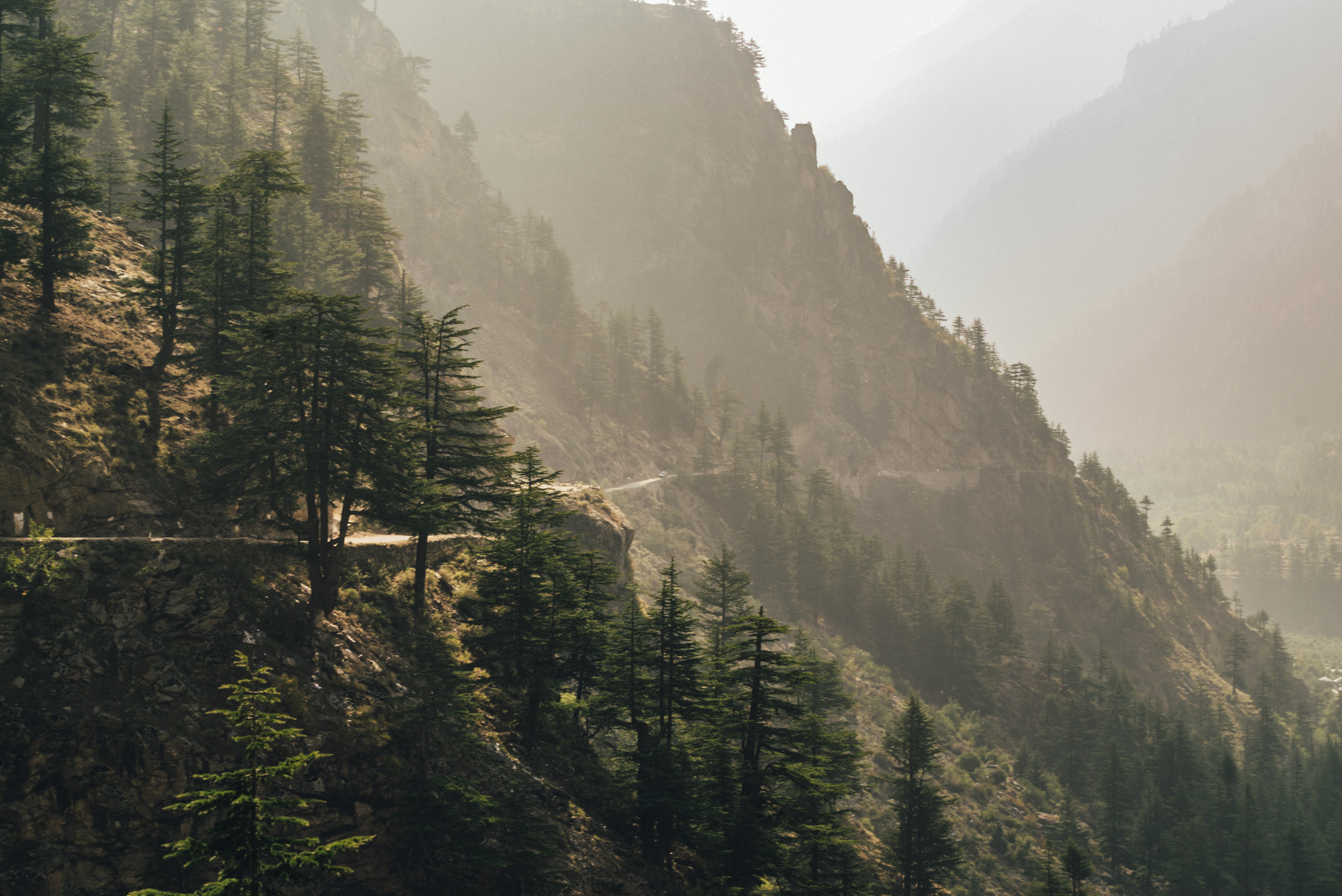Hindustan-Tibet Road— Lifeline to apple industry of India
Look for chances to take the less Travelled roads. There are no wrong turns” ….Susan Magsamen.

By
Colonel Satish Singh Lalotra
Nestled in the deepest recesses of mountains of the world are some of the wonders which mankind has still not unravelled till date. Himalayas the country’s northern sentinel is one such physical entity which holds such wonders.
Doting the myriad peaks of Himalayas are a plethora of sites held in reverence either for their religious importance or historical one. Our colonial masters the British, had early on realized the unique strategic importance of Himalayas for the subcontinent as such.
The transfer of power from the East India company to the Crown of England in mid 19th century saw many monumental changes on the landscape of India, with one such change being infrastructural improvement in terms of building of frontier roads, rail, bridges, tracks etc across the country.
The British in particular laid emphasis on border area development with an aim to restrict the access of Czarist Russian army in case they breached our northern frontiers aiming for warmer waters of Indian ocean area as envisaged during the Great Game.
As part of British expansionist plan Lord Dalhousie the then Governor General of India ordered the then CinC of India General Charles Napier to plan and execute a road access to Kinnaur area of Punjab hills (Now Himachal Pradesh) to gain foothold for business in Tibet as also to survey, reconnoitre and map region close to India’s frontier areas. My interest in penning down this article stems from the fact that I had the fortune of having driven on this historical highway as also having been posted to Rupa valley near Pooh/ Kinnaur in the mid.
1990s and hence footslogged the innermost areas of district Kinnaur. General Napier the CinC of India as stated earlier having been entrusted with planning and executing the highway pressed immense machinery at the disposal of East India Company into service and accordingly the great Hindustan Tibet Road came into existence through Shipki La pass, a length of 228 miles/364 Km till Shipki village in Tibet. While Hindustan Tibet road brought the route into focus, the area had long been one of the peripheral trade circuits of the legendary silk route.
The path carried goods like musk, borax, wool, livestock, dry fruits, precious and semi precious stones to and from Tibet, Kashmir, Ladakh and Yarkand. This road has also featured in the History channel as one of the most deadliest roads of the world Also known as V the silk route /NH22, Hindustan Tibet road begins from Ambala in Haryana as an off shoot of NH1 and runs about 40 kms in Punjab where its known as Chandigarh Ambala expressway. From Chandigarh it runs north towards Zirakpur and meets NH64 and thereafter goes to Panchkula PinjoreKalka and enters Himachal Pradesh at Parwanoo.
With the change in terrain it becomes a mountainous road full of hairpin bends and continues north east up to Solan and then goes north to Shimla. It thereafter meets NH88 where it repeatedly crisscrosses and goes along the KalkaShimla rail line, a UNESCO heritage site. The highway thereafter turns NE towards the Tibetan frontier from Shimla, reaches the border town of Khabruns short distance through Namgial up to Shipki La pass.
Enroute it passes places like Karcham, Wangtoo, Pooh all along river Sutlej. Incidentally all these places starting from Solan till Rekong Peo are the mainstay of world famous Himachali Delicious apple, the cynosure of Indian Diaspora abroad as also the natives of India. To the surprise of readers of this article Delicious apples of Himachal is not an Indian variety at all.
The cherry red Himachali apple was first introduced in the year 1910 by an American Samuel Evans Stokes, son of a wealthy American businessman who converted to Hinduism and named as Satyanand Stokes and became an ardent disciple of Mahatma Gandhi’s innermost circle. His vision of a sustainable local economy was a benign colonialism that worked and apples became the area’s staple produce.
Today farming families throughout the foothills of Kalkai Solan till the high reaches of Rekong Peo of Himachal boast of better health care, education and prosperity than many other rural communities of India.
Townships on the famous apple trail include Narkanda, Therog, Solan, Rampur, Pooh, Rekong Peo etc. The six months apple season from spring flowering to the last harvest in late September brings people flooding into Himachal. Paharis from around the region are joined by the Nepalese families from Nepal across the border to maintain the various apple orchards and to pick up the crops.
Apples are freighted in all manner of ways using the Hindustan Tibet road. Trucks and tourists crowd the roads, some are international tourists heading to various trekking destinations in Ladakh. Heading NE from Shimla NH22 still follows the old alignment of route as planned by Gen Charles Napier in 1850s.
The apples laden in the vehicles thereafter are ferried across to the famous Azadpur Mandi of Delhi, one of the largest in Northern India in a matter of hours eventually to be shipped across or to be air freighted abroad.
All kind courtesy Hindustan Tibet Road. Cartons of apples are loaded higher that seems possible onto small tray table trucks with squashed boxes of apples on the road testifying that this is a relatively secure practice.
Passengers on motorbikes embrace packs of apples as the driver struggles for balance on steep corners. Sway backed mules are loaded with boxes and lead two abreast along the road. Men doubled over carrying several crates of apples on their backs held in place by a long strip tied against their foreheads.
Knobbled hessian bags sewn shut wait to be collected at homestead doors. Apple wholesale sheds appear intermittently along the roadside and convoys of interstate trucks wait to go to the market.
These trucks are decked out in classic Indian style, half fairground carousel and half Hindu temple with vermillion and sunshine yellow as the favoured colours, painting instructions on the rear of these trucks are enthusiastically followed by one and all and the resultant cacophony adds to the thrill of the road trip.
I have been a mesmerized witness to all these razzmatazz of colours, sounds, smells/scents way back in 1996 while driving from my location in Rupa valley in Kinnaur on way to Shimla and back on this wonderful Hindustan Tibet road.
Apple cultivation has been the mainstay in Himachal of over 2.5 lakh families as the orchards now cover 1,09,533 hectares of land i.e. around 49 per cent of total area under fruit cultivation. The area under apple cultivation was a meager 40 hectares in 195051 ,but today it boasts of apple production to the tune of 8.19 lakhs.
HPMC (Himachal Pradesh horticulture produce marketing and processing corporation) the nodal point for the orchardists in the area is doing a yeoman’s service as far as marketing of their produce is concerned. Despite all these rosy things, apple industry is plagued by certain infrastructural hiccups, like lack of CA (Controlled Atmospheric) stores in good quantity to save this perishable item.
Though certain steps have been taken in the right earnest to set the skewed situation in favour of apple growers a lot of area is still left uncovered. The need of the hour is for the governments of the day both at center and state to initiate steps like bringing all procurement agencies under one window, increase infrastructure facilities, better transport facilities to help the apple growers achieve their optimum output from their orchards.




